About the lambik-O-droom cafe, the current one will be likely be torn down next year. Werner remarked: “What is now used as the cafe space and shop is at a lower level than the lambic aging rooms that are just on the other side. This one-story part of the building is not well insulated or energy efficient. So we will likely tear it down.”
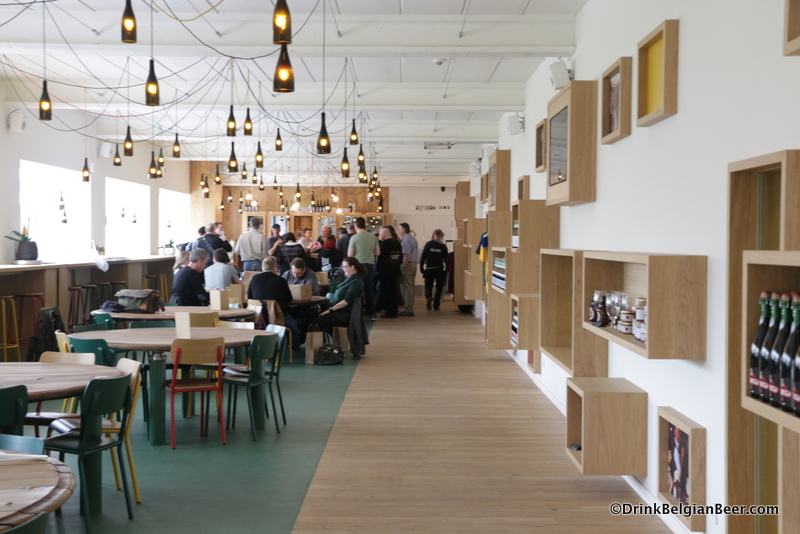
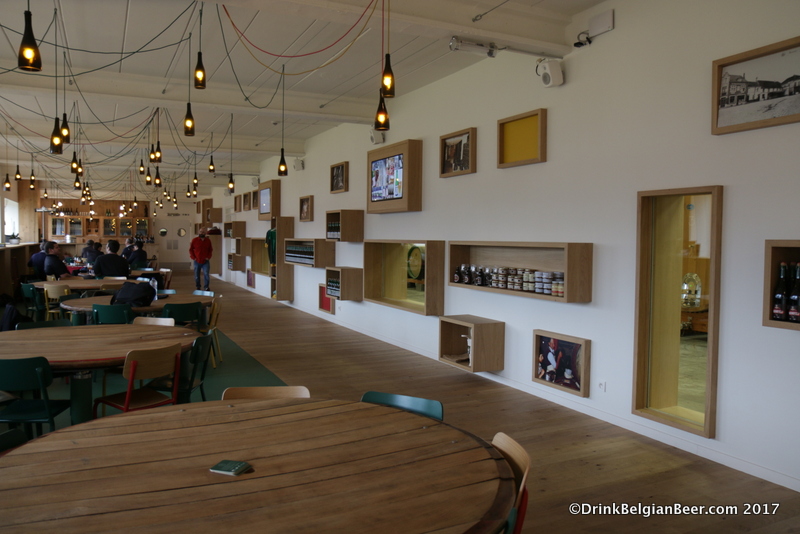
Werner said that the interior design of the new lambik-O-droom is still under development, and will be under consideration in the coming months. He emphasized that elements of what you will read below are subject to change.
Werner remarked: “The new lambik-O-droom cafe and visitor’s center that we have planned will be able to accommodate about twice as many people as the current one that opened in 2016. That means that we will have seating for about 100 visitors inside, and about 100 persons outside on the terrace (patio.) Note that this point is subject to change. In fact, we have some specific ideas about the new cafe space. The new lambik-O-droom will be two stories high, a ground floor and a first floor.” (Note: we would call this the first floor and second floor stateside.) Werner continued: “On the first floor, we will have an open space and an open hallway where you can look down on the ground floor. We intend to create various spaces in the new cafe: some where someone can sit alone and read a book, or listen to music, while enjoying a lambic. There will be other spaces where groups can sit and have a place to themselves, and possibly be a little louder. The cafe will be well insulated, so the noise will not affect other patrons that want some peace and quiet. We envision cozy spaces for a wide variety of patrons.”
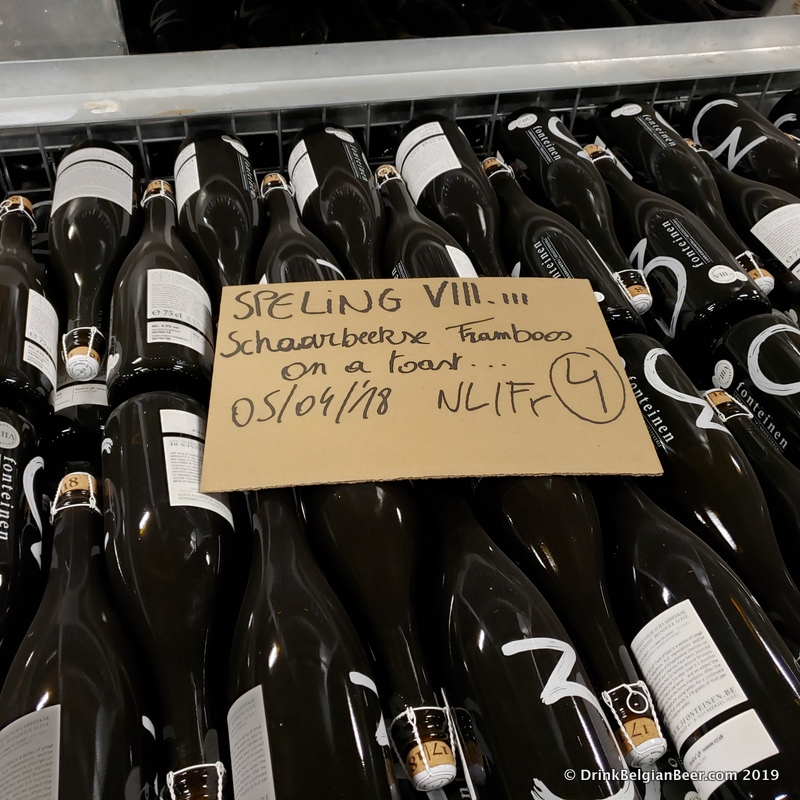
Oh, I think I mentioned a huge lambic aging cellar above. Yeah. Let’s do this. Werner remarked: “We are thinking to build a caveau (cellar) next to the lambik-O-droom, that will run the whole depth of the building, so you can see into it from the cafe, that is capable of holding as much as 250,000 bottles of geuze. In fact, we already have 50,000 bottles of geuze aging in the present site, and all of those will be moved to the new cellar when the building is completed.”
Werner added: “Another idea we have is to build a sort of “lambic library” which would be based on 3 Fonteinen, but with a broader view. In fact, we are already in the process of trying to buy old enamel lambic advertising signs and plates. We dream of a wall full of these old signs. We also have quite a number of documents relating to lambic for visitors to be able to read. One feature that we are also planning is an open fire.”
Lambic fans, you will be able to see all of the brewing in Lot. From a close but safe distance. One key element of the plan is this: “We are going to build a pedestrian only walking bridge that is enclosed. You will enter from the 1st floor (2nd floor to us in the U.S.) and you will be able to see the barrel room, the brewing house, the coolships, the warm conditioning room, but visitors will not be able to touch anything, as it will be enclosed. The walking bridge will then continue outside of the building, but will be under the dome we will build in the center courtyard between buildings, which will be sort of market square. This area will be one where we can hold small concerts, a beer festival, or a bigger version of the open door days, and more.”
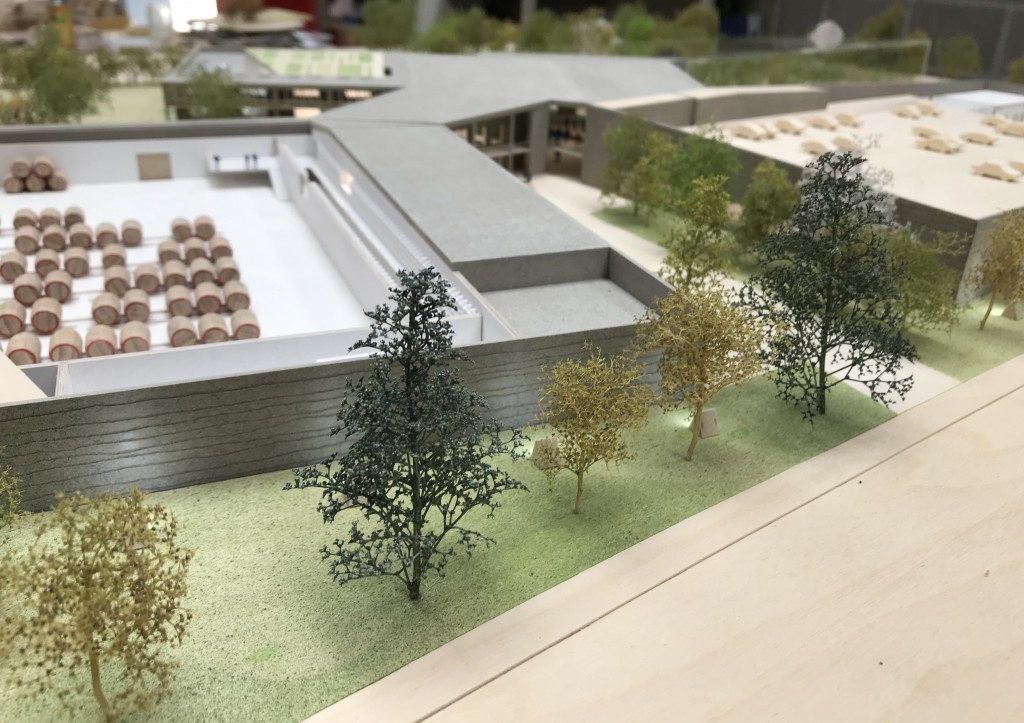
Having that space under a dome will be great for when the weather is rainy or otherwise not hospitable in Belgium, which sadly is a frequent occurrence in Belgium. Oh…and I forgot, you will be able to take your glass of lambic or oude geuze or kriekenlambiek (or whatever else strikes your fancy) and walk around the walking bridge with it, and everywhere else you go. That is hospitable!
On the ecological side of things, the park where the Schaarbeekse cherry trees will be planted will be open to the public during opening hours. “We will also plant quite a number of Black Alder trees, which are very common in the Payottenland,” Werner said. He added: “The choice of a public park is a deliberate one. We are turning an industrial compound into a green park, which includes planting a wide variety of indigenous trees, and a water buffer. Biodiversity is a real focus.”
There will also be a low-lying “flooding area” that will be under water in winter and have be a waving pattern, walkable garden in summer.
About possible food options at the new lambik-O-droom, Werner remarked: “We would like to have ‘curing/ripening room’ for artisanal charcuterie and cheeses, so we can offer these to our customers. But there will not be a restaurant at the new site.”
Werner remarked: “We hope to start collaborating with cafés, restaurants, B&B’s, and tourist organizations of all sorts to create a wider experience in and around the lambik-O-droom. There is so much to experience in the Zenne River Valley and the Pajottenland: from exploring culture and history, eating—from countryside sandwiches with white cheese to real gastronomic treats, and drinking, yes lambic, but certainly also beers from other local breweries; and seeing the landscapes! As well as electric-biking, walking, and more. This is a pillar we hope to develop with colleague brewers and blenders, tourist organizations, entrepreneurs, etc.”
As if all that wasn’t enough, 3 Fonteinen is working on even more. Werner told me: “Years ago, when all the barley and unmalted wheat that was used to brew lambic beer was obtained locally in Belgium, in the Payottenland, in fact it was winter barley and winter wheat that the lambic breweries and blenderies used. We would like to return to using these old varieties, and we have been doing an experiment with 11 local farmers here in lambic country since 2016. We discussed with them whether they would be open to growing these varieties. The main problem for the farmers here is that they cannot compete on the world market, and they have to be heavily subsidized by the government. Even with the subsidies, they are barely surviving.”
Werner added: “We told them we wanted to pay them a good price with which they could make a profit. And that we would take all the risk for a few years to see if this project will work. We want to involve other Belgian brewers to participate in the project, and we have been contacted by a number of breweries. And so we purchased 120 tons of raw unmalted wheat and unmalted barley and have been using that for experiments. We agreed to pay the farmers by hectare (note: a hectare is about 2.5 acres) instead of by the ton. Some farmers had a yield of 2 tons per acre, and some, 4 tons per acre. But they are guaranteed a set price based on the acreage and not the yield. So essentially, we at 3 Fonteinen are taking all the risk in this project.”
Werner continued: “In fact, we paid 2,500 euros per hectare for the barley and wheat. This is three times what the farmers could sell these grains for on the world market. But we have an aim, not to just use locally grown, historical grains in our lambics, but to also have them all be organically grown. And that is the only way you can grow these varieties.”
Werner also told me: “We have one member of the team now who is full-time, who wrote his Master’s thesis on the cereal network in brewing. His job is working with the farmers and brewers, to link them together, in a practical but also pragmatical way. He has a very busy but exciting job. We feel that we are changing something for the better.”
As to how the 3 Fonteinen brews might taste when produced using winter wheat and winter barley, Werner remarked: “I will tell you that we gathered with the 11 farmers this summer and tasted a lambic made with their winter wheat and an organic winter barley, with only 4 months of age on it—so basically, still a wort. It was in the line of what we are used to tasting with our current wheat and malt varieties, so that is a beginning. We are convinced that there will be an influence on the taste—and certainly in values. But while for the latter, we are all joined and joint around the same vision, the first is something we will need to wait for for another couple of years.”
Werner added: “Our idea of everything is going well. We hope that more farmers and more brewers will join the network. That’s a bit the aim of the whole project: that we try to create something more sustainable for the farmers and brewers, and to also help the small brewers differentiate themselves from the big brewers that don’t care about variety, that only care about getting as low a price as possible. Hopefully in this way, we will give Belgian beer a part of its old culture back.”
Werner continued: “It could be three or more years before we are finished with this. But there is a lot of positive energy around the project. We will only see in ten years, maybe twenty, if we have gotten anywhere. It is a risk, and we know that. But, like Gaston and Armand, we are very stubborn, Michael and I, and we see at least trying this project as the only option.”
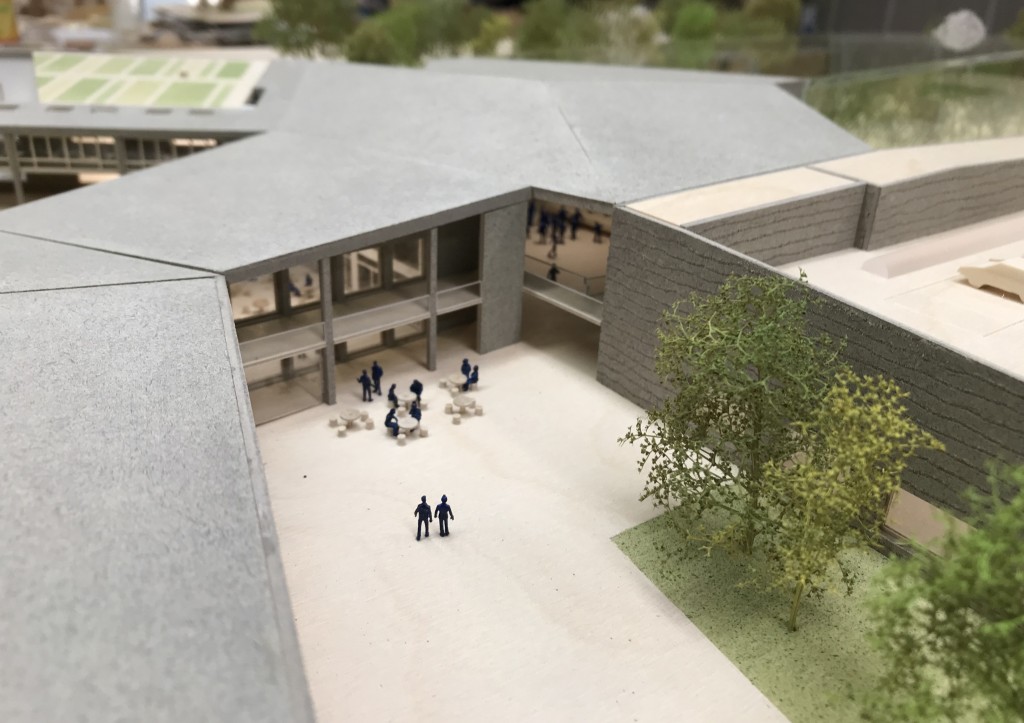
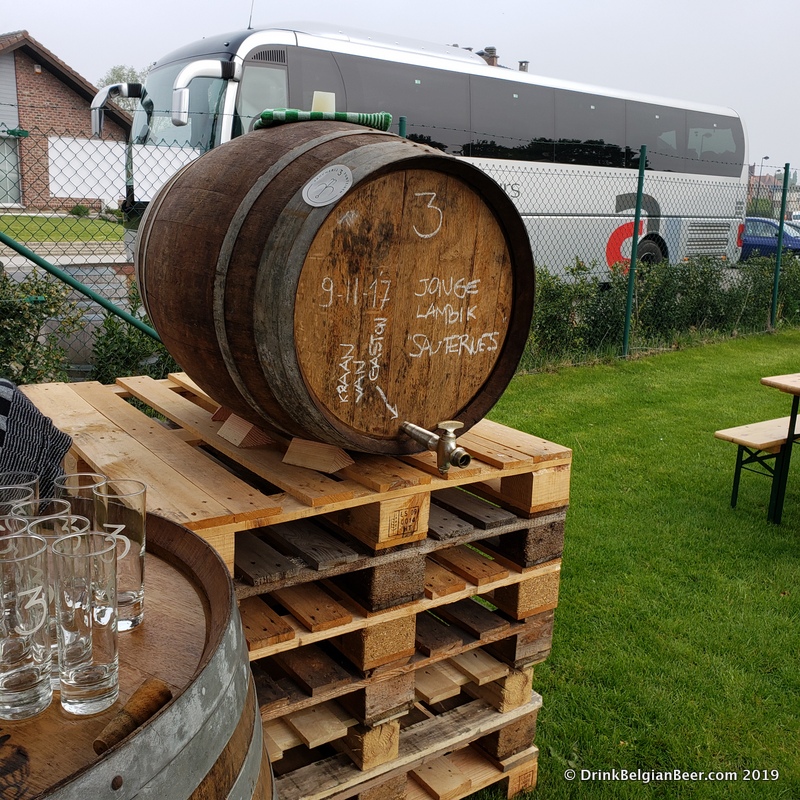
On the subject of brewing, Werner told me that the average ages of the maturation of the 3 Fonteinen beers continues to increase. He commented: “I also handle the labeling, and I can tell you that the weighted average of our oude geuze has increased from about 18 months, say a year or two ago, to where most batches have a weighted average age of 22 to 24 months. For both our regular oude geuze and Armand and Gaston, made with all of our own wort, the moment they leave the warm room and are labeled, the blend already has nine months in the bottle.”
Werner added: “We also have some very old lambic in our warehouse in Laarheide. We have some barrels of seven year old lambic. We will taste them sometime to see if the lambic is still good. Normally, you can age lambic for a maximum of four, maybe five years. Because in that amount of time, the lambic will be nearly fully fermented. At that point, it can go downhill, even turn to vinegar. It depends on whether the veil/film that forms over an old lambic is still intact. if it is, some barrels may have a beautiful lambic.”
I think I seriously would like to be there when they taste some of this lambic. Someone, please tell Werner for me….
About lambic blending, Werner had this to say: “Blending is not something you can learn from a book or classroom. It’s like a painter with a blank canvas, and he would like to make his masterpiece, with a wide variety of colors. In our world, the lambic world, it is aromas and taste with which you can play. But how to make the drawing, what color to use, what landscape to draw…those are things that can only be learned from one generation to the next. With 3 Fonteinen, it was imparted from Gaston to Armand, then from Armand to Michaël, and now Michaël is imparting his knowledge to other team members.”
Speaking of team members, with 3 Fonteinen’s expansion, set to be completed by 2027, they will likely double their staff from 18 at present to about 35 then. Werner commented: “We hope to start brewing in a completed facility by October 2022. The new construction will begin in October 2020, and is expected to take two years to complete. A very rigid project management will be needed to keep on a firm schedule.”
Werner added: “There is also another building that we already have permits for, that will not be built at this time, but hopefully in a few years. That building would likely be used as a warehouse for raw grains for the barley and wheat project, if it is successful. If it does not turn out successful, then maybe we won’t construct the building. But we are optimistic for the future.”
As to their status as both a lambic brewery and lambic blendery, that will continue. Werner remarked: “We will remain a hybrid player. While we could easily meet all of our own needs with our own wort from our own coolships, we feel like we make beautiful lambic blends from using other breweries’ wort, as well as our own. Also, 3 Fonteinen started as a blendery, and so we feel we should keep up with that tradition. Up until recently, our regular oude geuze was a blend of 3 Fonteinen wort, Lindemans wort, and Boon wort, all fermented and aged in our own barrels, of course. In the last year or so, we received two brews from Brouwerij De Troch of Wambeek, as their wort produces a very good lambic. So our new oude geuze blends in the future will consist of wort from 3 Fonteinen, Lindemans, and De Troch. Also, Armand and Gaston Oude Geuze will remain as our flagship, 100% in-house oude geuze, using only our own wort from our own coolships.”

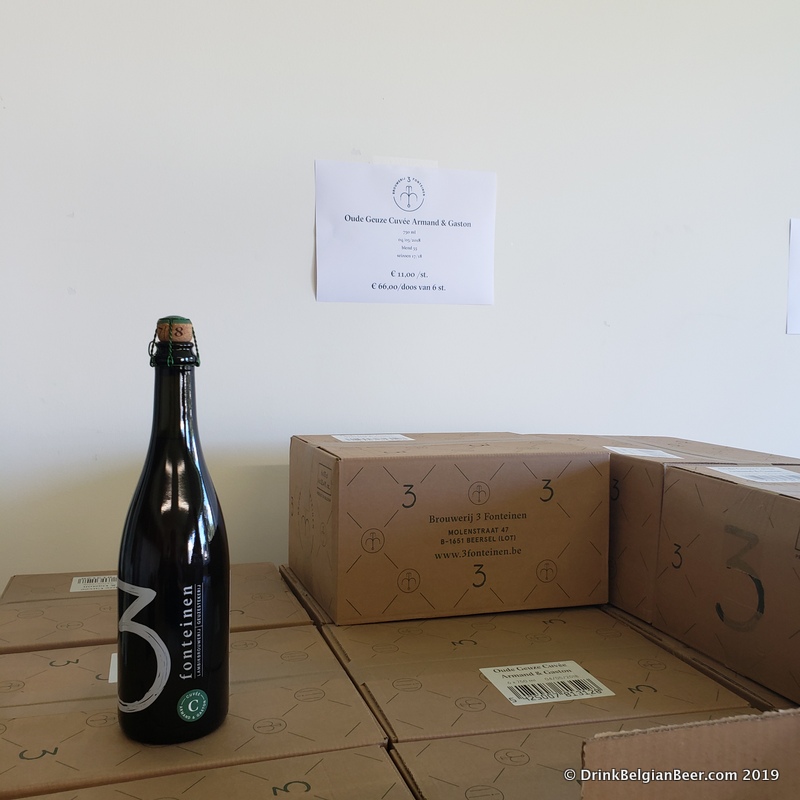
The new 3 Fonteinen site will be something to behold in a few years. It will be a must-visit destination for all lambic beer lovers!
If you like this website, please like our Facebook page
and our Twitter page <

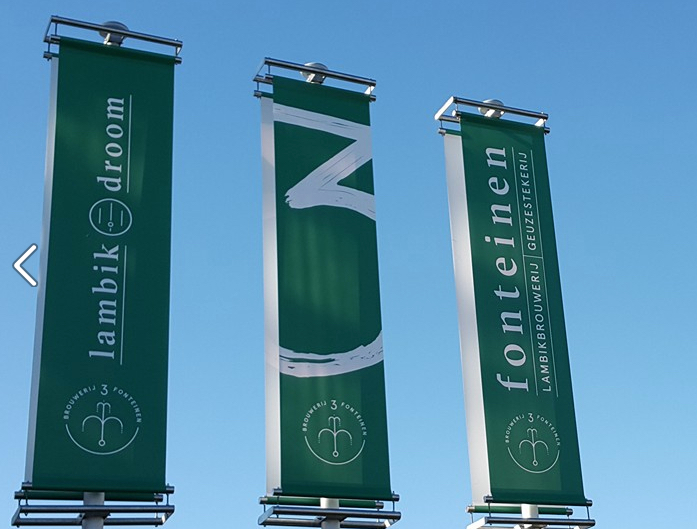
Leave a Reply